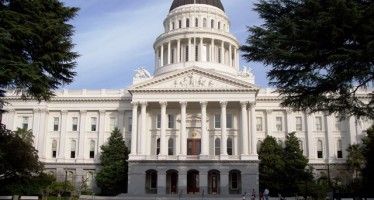State Pension Meltdown Coming
OCT. 21, 2010
By WAYNE LUSVARDI
The independent Milken Institute has just released a report “Addressing California’s Pension Shortfalls” that has an alarming finding: assuming no corrections are made, the combined liability of the three major state pension funds (Cal-PERS, CalSTRS, and UCRS) will swell to 5.5 times the total state tax revenue by as early as 2012! The study states that a solution needs to be found quickly and equitably by all parties, including unions, to avert catastrophic cuts in state services.
The three pension funds are the California Public Employees’ Retirement System (CalPERS), the California State Teachers’ Retirement System (CalSTRS) and the University of California Retirement System (UCRS).
The Milken Institute report points out several demographic and accounting factors that will inevitably drive up pension liabilities:
1. The conventional discount rate used by these pension funds (7.75 percent to 8 percent) artificially makes the amount of liabilities appear smaller. It is unrealistic in this economic environment to base retirement fund investment returns on around an 8 percent per year when 30-year bonds are hovering a little over 5 percent. If the lower and more realistic bond discount rate is used the actual magnitude of the pension liability will become more apparent.
2. Demographic trends suggest there will be an undiminished, and probably increasing, demand for state services and goods. Seniors will grow from 11 percent of the population to 20 percent by 2050. As seniors live longer the number of benefit-receiving years will increase.
3. The profile of the state workforce is also forecasted to drive up pension liabilities. The working age population will drop from 60 percent to 54 percent over the same period of time, thus shrinking the tax base.
4. The proportion of school age children will rise slightly but their composition will rely more on public schools, thus making school cutbacks unacceptable. Prop 98 requires 40 percent of the state general fund be dedicated to public schools.
5. If action is not taken rapidly raising pension fund contributions for younger state employees will have less effect in lessening the problem.
6. If nothing is done the combined pension liability for each working age adult in California will rise to $10,000, or about $24,000 per household. This could trigger a deeper, longer recession.
The Milken Institute study recommends two solutions: (1) raising the retirement age and increasing employee contributions; and (2) shifting to a risk-sharing retirement plan which will lower the guaranteed level of pension.
The authors of the study point out that in October the SEIU agreed to include most of the above provisions, including work furloughs, in their contract covering 132,000 employees. But this only binds 16 percent of the members of CalPERS and only covers the next contract period. What is needed is a long-term re-restructuring (risk-based pension plan) which would be difficult to pound out by 2012.
Unfunded state pension liabilities as percentage of total state general fund revenue
| Year | CalPERS | CalSTRS | UCRS | Combined |
| 2009 | 278% | 184% | 2.4% | 464.4% |
| 2010 | 279% | 185% | 6.8% | 470.8% |
| 2011 | 298% | 197% | 11.4% | 506.4% |
| 2012 | 328% | 217% | 17.3% | 562.3% |
| 2013 | 320% | 212% | 19.8% | 551.8% |
| 2014 | 312% | 207% | 19.9% | 538.9% |
Related Articles
Average Joe seat on state commission filled by the well-connected
Stockton’s Anthony and Rima Barkett were hosting a fabulous party in Rome in 2007 to discuss what the world could
Despite topping polls, Condoleezza Rice not running for Senate
Political pundits and strategists finally are taking seriously that, despite topping polls, Condoleezza Rice is not running for the U.S. Senate. The decision
Will Huy Fong end up in Texas?
When David Tran fled Vietnam in 1978, he left his possessions behind and boarded the dilapidated freighter Huey Fong




